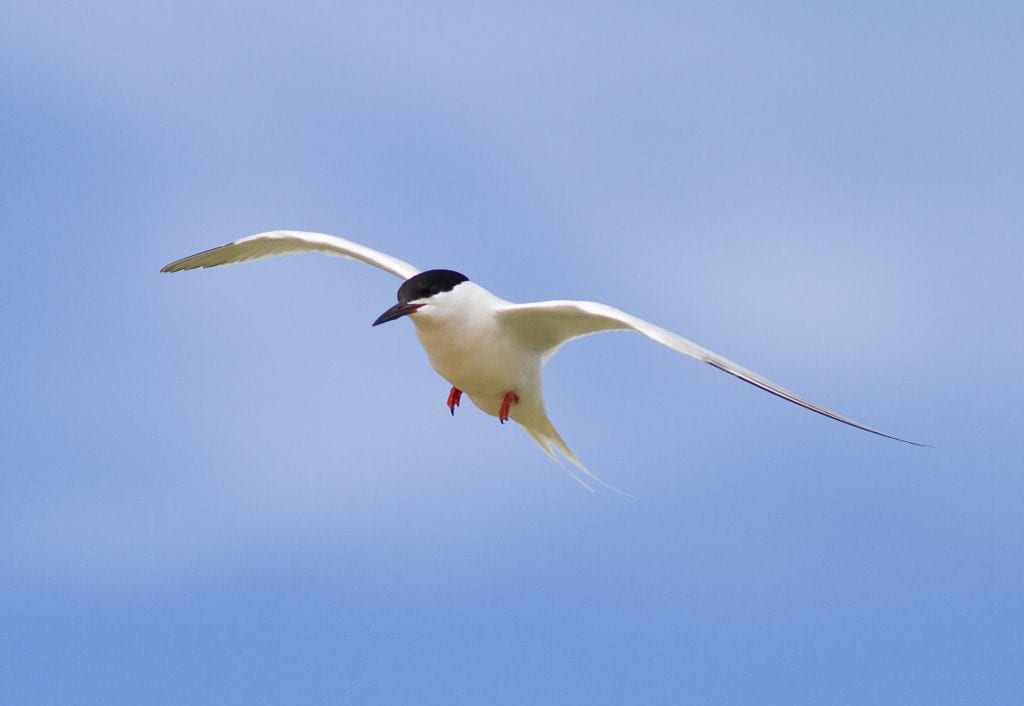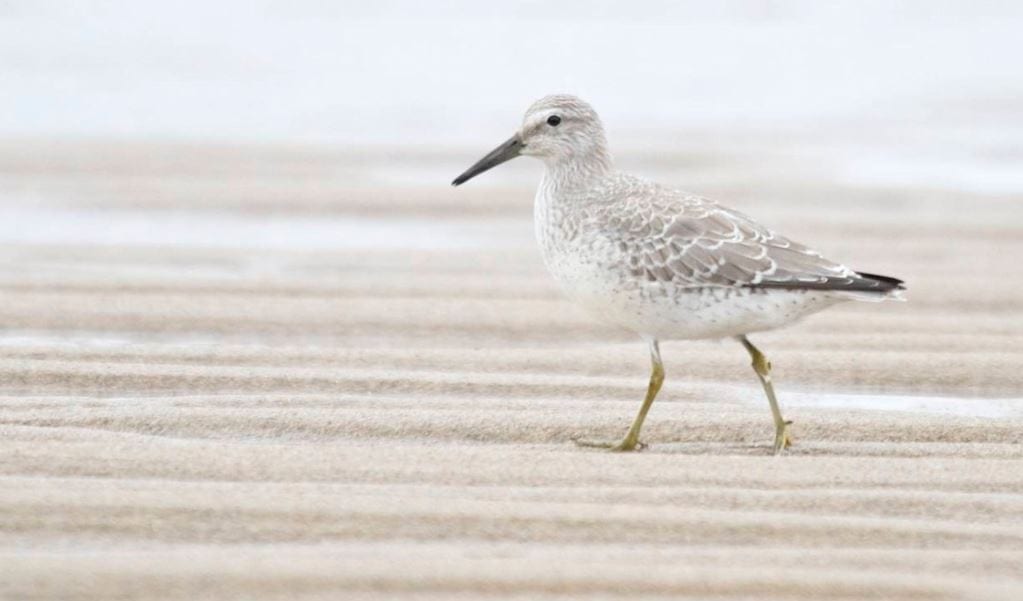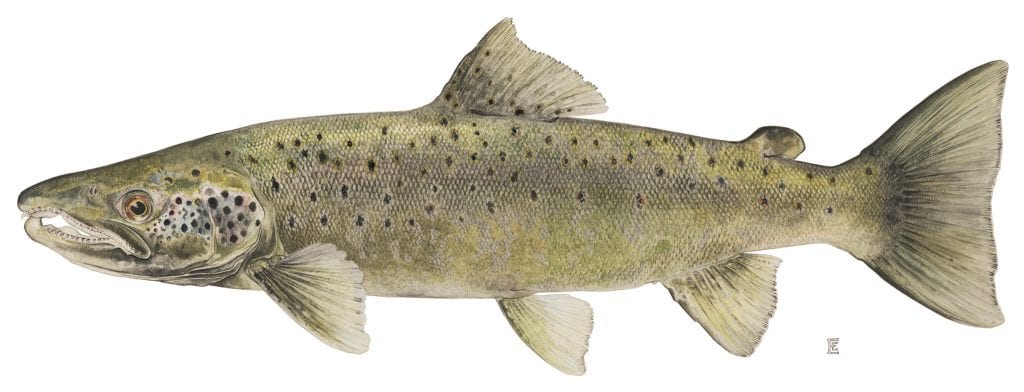
An estimated one million species of plants and animals currently face an imminent threat of extinction. Nevertheless, the Trump Administration has just issued new regulations significantly weakening our nation’s most successful wildlife conservation law, the Endangered Species Act.
On Thursday, August 15, Senior Policy and Advocacy Specialist Eliza Donoghue and I met with Senator Susan Collins’ office to discuss the ways these new regulations erode the effectiveness of this bedrock law.
We are certain that these new regulations will harm wildlife and plant species in Maine, including species that are currently protected under the Act and those that need protection. These are species that Maine people hold near and dear, that are woven into Maine’s cultural heritage, and that benefit our economy.
In order to help sort through the complexities of these new rules, we’ve summarized some of the changes made by the Trump Administration and discuss how they might impact Maine species.
- Consideration of the impacts of climate change
Change: The Trump Administration has “clarified” the use of the term “foreseeable future” in deciding whether to grant Endangered Species Act protections to a species.
Impact in Maine: The change in definition for “foreseeable future” creates the opportunity to establish a timeframe suitable for the U.S. Fish and Wildlife Service (USFWS), thus subject to political whims and potentially limiting “foreseeable future” analyses for species threatened by climate change.
All of Maine’s wildlife species are and will be impacted by our changing climate. Sea level rise will dramatically change coastal habitat, like it already is for the Saltmarsh Sparrow. Boreal forest habitats are and will continue to be shrinking and moving north, and the species who live there, like the Canada Lynx, will be forced to move with them. Though these impacts are difficult to forecast with exact certainty, they are undoubtedly occurring. Limiting the ability of USFWS to consider climate change will decrease the chances of vulnerable species gaining Endangered Species Act protection.

- Changes to the creation of Critical Habitat
Change: The USFWS has made it more difficult to protect habitat that is currently unoccupied by the listed species.
Impact in Maine: The single largest driver of species extinction is habitat loss. It is crucial to give species the space they need to recover, and also new places for them to move into if their current habitat is changing and as their population increases. However, the Trump Administration’s limitations on protecting habitat that is not currently occupied by the species will make it more difficult for species to grow and recover.
Many species currently listed will be impacted by this change. The designation of critical habitat has been a lifeline for the persistence of many species, including the Canada Lynx, listed as Threatened under the ESA. The designation of critical habitat by USFWS prompted the agency to work directly with Maine’s forest products industry to manage their forests to support lynx. Private landowners were able to obtain federal dollars to manage for lynx on their land- a win-win relationship for people and lynx. Had the new rules been in place at the time of the Canada lynx listing, there would not have been incentives to protect lynx habitat, the mutually-beneficial partnership between the USFWS and the forest products industry would not have formed, and lynx would likely be rarer than ever in Maine.
- Changes in protections for Threatened vs. Endangered species
Change: Species are listed as either Threatened or Endangered under the Endangered Species Act, and there are slight differences in protections for each. The rules strictly prohibits the “take”–which is defined as an act “to harass, harm, pursue, hunt, shoot, wound, kill, trap, capture, or collect”–of Endangered species, but says that take “may” be permitted for Threatened species.
Under the new rules, however, threatened species will not be protected against “take” unless a species-specific plan is put in place and that plan prohibits take.
Impact in Maine: In Maine Audubon’s experience protecting Piping Plovers, the prohibition against take has been the motivating factor to bring municipalities to the table to work together to protect this vulnerable species. If the new rules had been in place at the time of the plovers’ listing, we would not have been able to get our partners to the table, which has allowed Maine’s population to get where it is today. The kind of species-specific plans now called for under the Trump rules will take years to draft, delaying protections for the species at a time when they’re needed most.

- Limits on consultation between agencies
Change: When a federal agency is considering to be doing something that might impact a listed species, or is issuing a permit for an activity that might impact a listed species, the ESA requires the agency to formally consult with the USFWS to determine what the impacts might be. These consultations are one of the most frequently-used and important protections granted under the Endangered Species Act, but the new rules make consultations less likely to occur.
Now, the USFWS must act within a 60-day deadline to respond to an agency’s request for concurrence on impact determinations, the “environmental baseline” used to determine the impacts is more limited, and other changes were made in the name of “streamlining” and “expediting” these consultations.
Impact in Maine: Consultations in Maine are often triggered when a project requires a federal permit, such as a U.S. Army Corps of Engineers permit, for activities like dredging or filling in or near a waterbody. The new ESA rules would substantially limit the instances in which agencies like the Army Corps must consult with the U.S. Fish and Wildlife Service due to the presence of a threatened or endangered species. Limiting agency consultation makes Maine’s federal threatened or endangered species such as the Northern Long-eared Bat, Red Knot, and Rusty-patched Bumble Bee more susceptible to the impacts of new development.
- Consideration of the economic impacts of protection
Change: The original Endangered Species Act mandated that decisions about listing species should be based on the best available data “without reference to possible economic or other impacts of such determination.” The Trump Administration has eliminated that phrase in the rules implementing the statute, for the first time permitting the USFWS to consider, for example, the economic impacts of a company not being able to drill or mine in a certain area because of the presence of an endangered species.
Impact in Maine: This has the potential to be the biggest change of all. There are economic impacts when taking action to protect species, but, historically, our nation has prioritized biological considerations above economic ones when it comes to the extinction of species.
For example, the recovery of the Bald Eagle is one of the biggest successes of the Act. The pesticide DDT is widely known as a primary factor for the population’s demise and because of protections afforded to the Bald Eagle under the ESA, our government banned DDT. This may not have happened, however, had the new rules been in place at the time of the Bald Eagles’ listing. Perhaps the cost of saving the Bald Eagle would have been deemed too high in the 1970s and the USFWS would have succumbed to pressure from the agriculture lobby. What species will not gain Endangered Species Act protections in the future because of this economic test or political pressure?
____
These are just some of the ways in which these changes to the ESA can and will affect our most vulnerable species. Other impacts are yet to be determined. We will continue to use our voice and share our experience working with stakeholders across Maine to conserve at-risk species, and we hope you’ll use yours. You can start by demanding action from Maine’s Congressional representatives.
